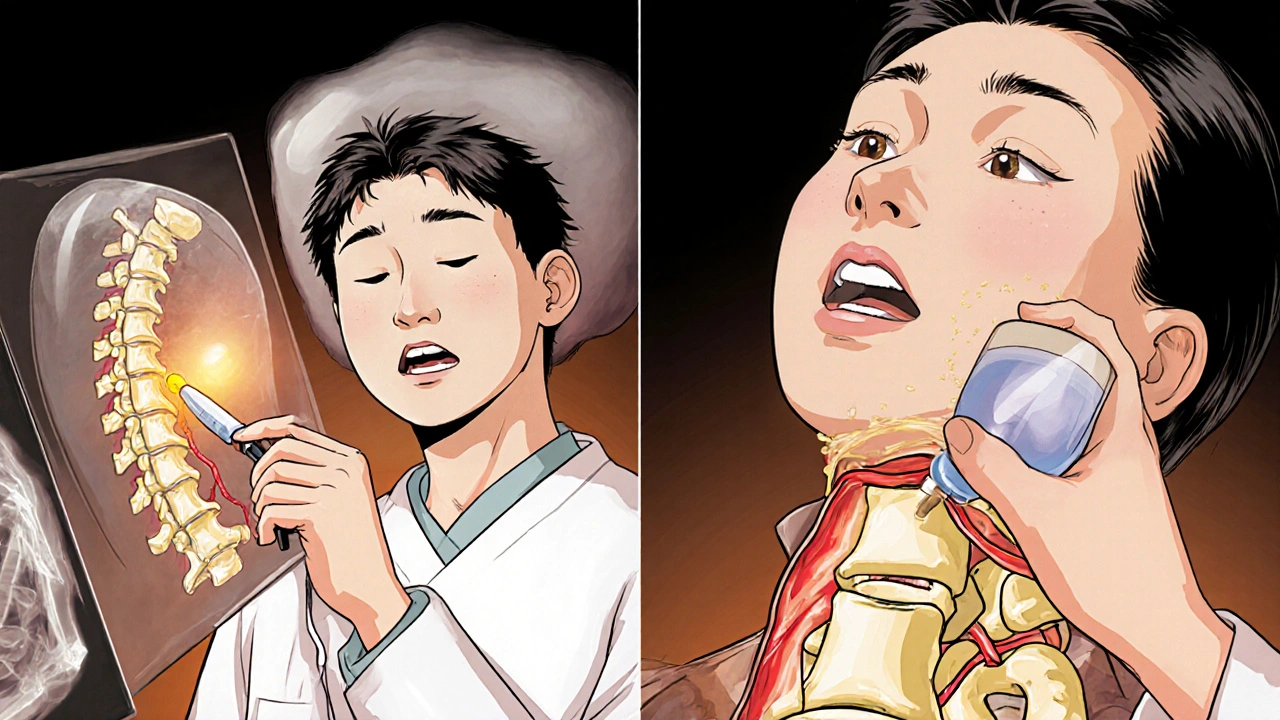Vertebroplasty: What It Is, Who It Helps, and What to Expect
When a vertebra in your spine cracks or collapses—often from osteoporosis or injury—it can cause sharp, lasting back pain that doesn’t respond to rest or painkillers. That’s where vertebroplasty, a minimally invasive procedure that injects medical-grade bone cement into a fractured spinal vertebra to stabilize it and relieve pain. Also known as bone cement injection, it’s not a cure for osteoporosis, but it can stop the pain from getting worse and help you move again. Unlike open surgery, it’s done through a tiny needle, usually under local anesthesia, and most people go home the same day.
Vertebroplasty works best for people with recent, painful vertebral compression fractures that haven’t healed after a few weeks of rest and medication. It’s not for everyone—doctors avoid it if the fracture is old, if there’s nerve damage, or if the bone is too weak to hold the cement. The procedure targets the specific spot where the bone broke, using real-time X-ray guidance to place the cement precisely. Once the cement hardens, it acts like an internal cast, holding the bone together and reducing movement that causes pain. Many patients report pain relief within hours, and studies show most regain mobility within days.
Related procedures like kyphoplasty, a similar technique that first inflates a balloon to restore some height to the collapsed vertebra before injecting cement are sometimes preferred if the spine has lost significant height. But for many, vertebroplasty is simpler, faster, and just as effective. It’s often paired with treatments for the root cause, like osteoporosis medications, drugs that slow bone loss and reduce future fracture risk, because without addressing bone strength, another fracture is likely.
You’ll find posts here that dig into what happens before, during, and after the procedure—what to expect in recovery, how it compares to other spine treatments, and why some patients still struggle with pain even after cement is injected. There’s also guidance on managing chronic back pain with physical therapy, avoiding medications that worsen bone loss, and how to tell if your pain is from a fracture or something else. Whether you’re considering the procedure or just trying to understand why it’s recommended, this collection gives you real, practical insights—not just textbook definitions.

Kyphoplasty vs Vertebroplasty: What You Need to Know About Vertebral Fracture Treatment
Kyphoplasty and vertebroplasty offer fast pain relief for spinal fractures caused by osteoporosis. Learn how they work, their differences in cost, risk, and outcomes, and which one is right for you.